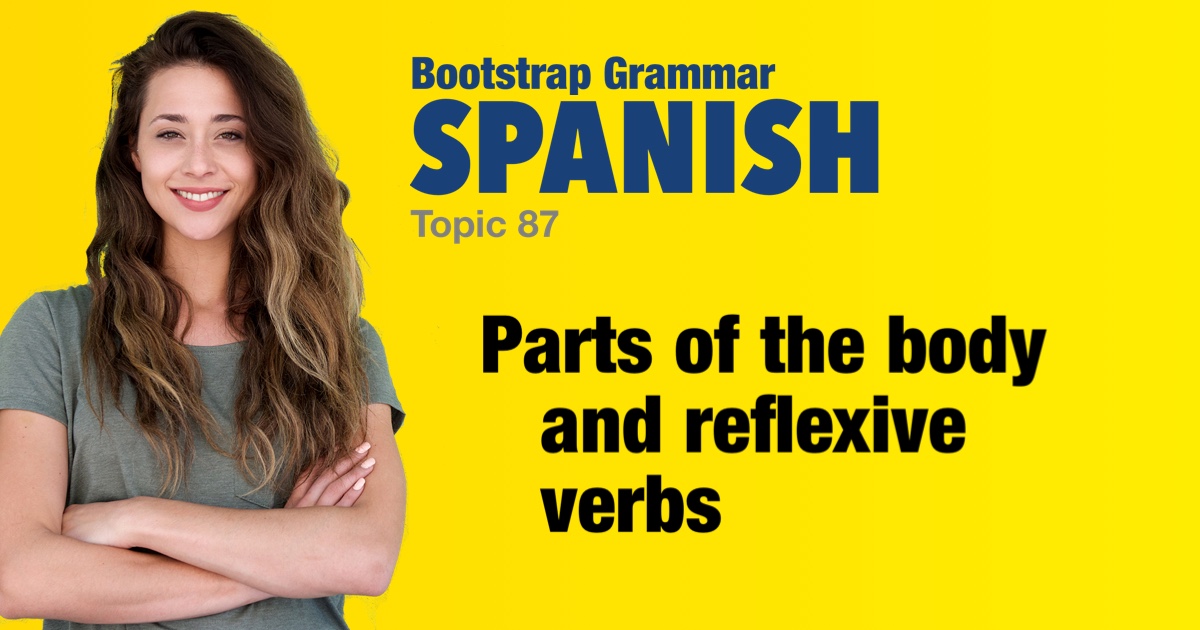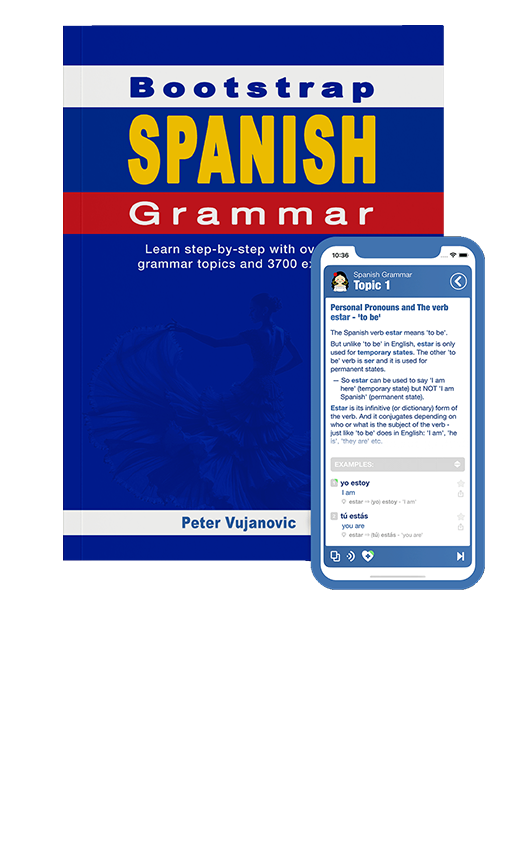Spanish grammar - Parts of the body and reflexive verbs |
|||
|
|||
When referring to a part of the body in Spanish we don't use the possessive adjective ('my leg' or 'his back'). Instead in Spanish, the definite article is used ('la pierna' or 'la espalda'). And often whose body part it is is conveyed by which reflexive pronoun is used. -- We could also, of course, use the possessive de to specify who the body part belongs to - for example la pierna de Juan. |
| Examples: | |
|
Me cepillo los dientes.
I brush my teeth.
|
|
|
Ellas se cepillan los dientes todos los días.
They (females) brush their teeth every day. |
|
|
¿Por qué no te cepillas los dientes?
Why don't (you) brush your teeth? |
|
|
¿Te cepillas el pelo?
Do (you) brush your hair?
|
|
|
Ellos se lavan la cara.
They wash their faces.
|
|
|
¿Ella se lava las manos?
Does she wash her hands? |
|
|
¿Ella se lava las manos?
Does she wash her hands? |
|
|
¿Él se afeita la cara?
Does he shave his face?
|
|
|
Él siempre se corta un dedo con este cuchillo.
He always cuts a finger with this knife.
|
|
|
En esta escena, ella se rompe la pierna.
In this scene she breaks her leg.
|
|
|
Ella se corta las uñas cada semana.
She cuts her fingernails every week.
|
|
|
Yo me lavo las manos.
I wash my hands. |
|
|
Os laváis la cara.
(You all) wash your face. |
|
|
Te lavas las manos antes de comer.
(You) wash your hands before eating. |
|
|
Él se cepilla los dientes.
He brushes his teeth.
|
|
 |
|



